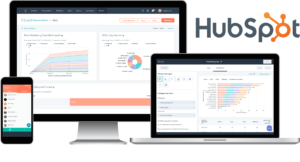Introduction
In today's ultra-competitive digital landscape, businesses face a constant challenge: how to stand out, attract customers, and drive sustainable growth. The answer for many lies in leveraging the right tools. Gone are the days of manual, fragmented marketing efforts. Welcome to the era of marketing software – the indispensable ally for any business aiming to thrive in 2025 and beyond.
This ultimate guide will break down what marketing software is, why it's crucial for your success, the different types available, and how to choose the best solutions for your unique business needs. Get ready to streamline your operations, make data-driven decisions, and unlock unprecedented growth.
The "Why": Benefits of Investing in Marketing Software
Why should you prioritize integrating marketing software into your strategy? The benefits are compelling and directly impact your bottom line:
- 1 Increased Efficiency & Automation: Imagine tasks like scheduling social media posts, sending personalized emails, or segmenting customer lists happening automatically. Marketing software frees up valuable time for your team to focus on strategy and creativity, not repetitive manual work.
- 2 Improved Data & Analytics: Stop guessing and start knowing. These tools provide real-time data on campaign performance, customer behavior, and website traffic. This allows for data-driven decisions, optimizing your spend, and identifying what truly resonates with your audience.
- 3 Enhanced Customer Experience: Personalization is key in 2025. Marketing software allows you to deliver highly relevant content and offers, nurture leads effectively, and provide consistent, engaging experiences across all touchpoints, leading to stronger customer relationships.
- 4 Better ROI (Return on Investment): By optimizing campaigns, reducing manual errors, and focusing on high-performing strategies identified through analytics, marketing software helps you maximize every marketing dollar spent.
- 5 Scalability & Growth: As your business expands, your marketing efforts need to scale with it. The right marketing software ensures you can manage larger campaigns, reach wider audiences, and handle increasing customer interactions without proportional increases in manual labor.
Types of Marketing Software: Your Digital Toolbox
The world of marketing software is vast and varied, designed to address specific aspects of your marketing funnel. Here are the key categories:
- CRM (Customer Relationship Management) Software:
- Purpose: Manages all interactions with current and potential customers. It's your central hub for sales pipelines, customer service, and relationship building.
- Examples: HubSpot CRM, Salesforce, Zoho CRM.
- Image Idea: A screenshot of a clean CRM dashboard showing customer profiles or a sales pipeline.
- Email Marketing Software:
- Purpose: Essential for creating, sending, tracking, and automating email campaigns – from newsletters to promotional offers and drip campaigns.
- Examples: Mailchimp, Constant Contact, ConvertKit, ActiveCampaign.
- Image Idea: An example of a well-designed email template within an email marketing platform, or a visual showing email automation flows.
- Social Media Marketing Software:
- Purpose: Helps you manage multiple social media accounts, schedule posts, monitor engagement, and analyze performance across platforms.
- Examples: Hootsuite, Buffer, Sprout Social.
- Image Idea: A consolidated social media scheduling calendar or an analytics report from a social media tool displaying engagement metrics.
- SEO (Search Engine Optimization) Software:
- Purpose: Crucial for improving your website's visibility on search engines. These tools assist with keyword research, competitor analysis, site audits, and rank tracking.
- Examples: Semrush, Ahrefs, Moz, Google Analytics, Google Search Console.
- Image Idea: A screenshot of a keyword research tool showing search volume or a site audit report highlighting on-page issues.
- Content Marketing Software:
- Purpose: Supports content creation, optimization, distribution, and performance tracking – from blog posts to videos and infographics.
- Examples: Clearscope (content optimization), Grammarly (writing assistance), Frase (AI content briefs).
- Image Idea: A visual representation of a content calendar, an AI writing assistant interface generating text, or a graphic showing content types.
- Marketing Automation Software:
- Purpose: Automates repetitive marketing tasks, lead nurturing sequences, and personalized customer journeys based on predefined rules.
- Examples: HubSpot Marketing Hub, Marketo, Pardot.
- Image Idea: A flowchart or visual representation of an automated marketing workflow (e.g., email sequence triggered by a website visit or download).
- Analytics & Reporting Software:
- Purpose: Provides deep insights into website traffic, campaign effectiveness, user behavior, and overall marketing performance.
- Examples: Google Analytics, Adobe Analytics, Tableau.
- Image Idea: A graph or chart from an analytics dashboard showing website traffic trends, conversion rates, or campaign performance over time.
- Landing Page & Website Builders:
- Purpose: Enables the creation of high-converting landing pages and straightforward websites without extensive coding knowledge.
- Examples: Leadpages, Unbounce, WordPress (with builders like Elementor).
Key Factors to Consider When Choosing Marketing Software
Selecting the right marketing software isn't a one-size-fits-all process. Consider these factors:
- Your Business Goals & Needs: What specific problems are you trying to solve? Are you looking to generate more leads, improve customer retention, or increase brand awareness? Clearly defining your objectives is the first step.
- Budget: Marketing software comes at various price points, from free tiers to expensive enterprise solutions. Define your budget early – considering monthly subscriptions, annual contracts, and potential hidden costs.
- Scalability: Can the software grow with your business? Choose solutions that can handle increased volume and complexity as you expand your team or customer base.
- Ease of Use & User Interface (UI): A powerful tool is useless if your team can't figure it out. Opt for intuitive platforms with clear interfaces and a manageable learning curve.
- Integrations: Will the new software seamlessly connect with your existing tools (e.g., your CRM, accounting software, website platform, other marketing tools)? Good integration prevents data silos and enhances efficiency.
- Features & Functionality: Does it offer all the specific features you require? Don't pay for features you'll never use, but also ensure it meets your core needs and offers room for future growth.
- Customer Support & Resources: Look for vendors that offer robust customer support, comprehensive tutorials, documentation, and a community forum for troubleshooting and best practices.
- Reviews & Reputation: Check independent reviews on trusted platforms (like G2, Capterra, Trustpilot) and look for case studies. What do other users say about the software's performance, reliability, and the vendor's responsiveness?
- Security & Data Privacy: Especially important when handling customer data. Ensure the software complies with relevant data protection regulations (e.g., GDPR, CCPA) and has strong security protocols.
Top Marketing Software Solutions to Watch in 2025 (Brief Overviews)
While the "best" depends on your specific needs, here are a few highly-regarded marketing software platforms often considered industry leaders, continuously evolving for 2025:
- HubSpot: An all-in-one powerhouse covering CRM, marketing automation, sales, and customer service. Ideal for businesses looking for a unified platform to manage their entire customer journey. Offers a free CRM and scalable paid hubs.
- Semrush / Ahrefs: Indispensable for SEO and content marketers. They offer deep insights into keyword performance, competitor strategies, backlink analysis, and content gaps. Critical for organic growth.
- Mailchimp: A popular choice for email marketing, especially for small to medium businesses. It's user-friendly and offers robust email campaign features along with basic CRM functionalities.
- Buffer / Hootsuite: Excellent for social media management, enabling scheduling, analytics, and team collaboration across various social platforms. Helps maintain a consistent social presence.
- Google Analytics / Google Search Console: Free, essential tools provided by Google for understanding your website traffic, user behavior, and search performance. Absolutely foundational for any digital marketing strategy, offering crucial insights directly from the source.
How to Implement and Get the Most Out of Your Marketing Software
Acquiring marketing software is just the first step. Effective implementation is key to maximizing your investment:
- Start Small & Scale Up: Don't try to roll out every feature at once. Begin with the most critical functionalities that address your immediate pain points, get your team comfortable, and then gradually expand usage as you learn.
- Train Your Team: Invest time in proper training. Ensure everyone who will use the software understands its capabilities, best practices, and how to leverage it effectively for their roles. Many vendors offer free training resources.
- Integrate Wisely: Connect your new marketing software with existing systems (e.g., your CRM, website, sales tools, accounting software) to create a seamless flow of data. This prevents silos and ensures a unified view of your customer.
- Regularly Review & Optimize: Marketing is dynamic. Constantly analyze the data and reports generated by your software. Identify what's working, what's not, and areas for improvement. Adjust your strategies and campaigns based on these insights.
- Leverage Support & Resources: Utilize the vendor's customer support channels, online tutorials, webinars, documentation, and user communities. These resources are invaluable for troubleshooting issues, discovering new features, and optimizing your usage.
Future Trends in Marketing Software (Looking Ahead to 2025)
The marketing software landscape is continually evolving. Keep an eye on these key trends that will shape how businesses market themselves in 2025 and beyond:
- 1 AI & Machine Learning Dominance: Expect even more sophisticated AI for predictive analytics (forecasting customer behavior), hyper-personalization (delivering individualized content), automated content generation, and smarter bidding in advertising platforms. AI will continue to optimize and automate complex tasks.
- 2 Hyper-Personalization at Scale: Tools will offer more granular data and AI-driven insights to deliver truly individualized customer experiences across all channels, moving beyond basic segmentation to truly unique interactions.
- 3 No-Code/Low-Code Platforms: Making powerful marketing functionalities accessible to business users without extensive coding knowledge, democratizing advanced strategies and allowing faster deployment of campaigns.
- 4 Unified Platforms: The trend towards all-in-one platforms will continue, aiming to provide a single source of truth for all marketing, sales, and customer service data, breaking down departmental silos.
- 5 Emphasis on Privacy & Compliance: As data privacy regulations become stricter globally (like GDPR and CCPA), marketing software will increasingly focus on built-in compliance features, robust data security, and transparent data handling practices. First-party data strategies will be key.
Conclusion
In 2025, the competitive edge belongs to businesses that intelligently harness technology. Investing in the right marketing software isn't just about efficiency; it's about making smarter decisions, building stronger customer relationships, and achieving sustainable business growth.
By understanding the diverse types of tools available, carefully evaluating your needs, and committing to effective implementation, you can transform your marketing efforts from a challenge into your strongest competitive advantage. Embrace these tools, and watch your business thrive.




